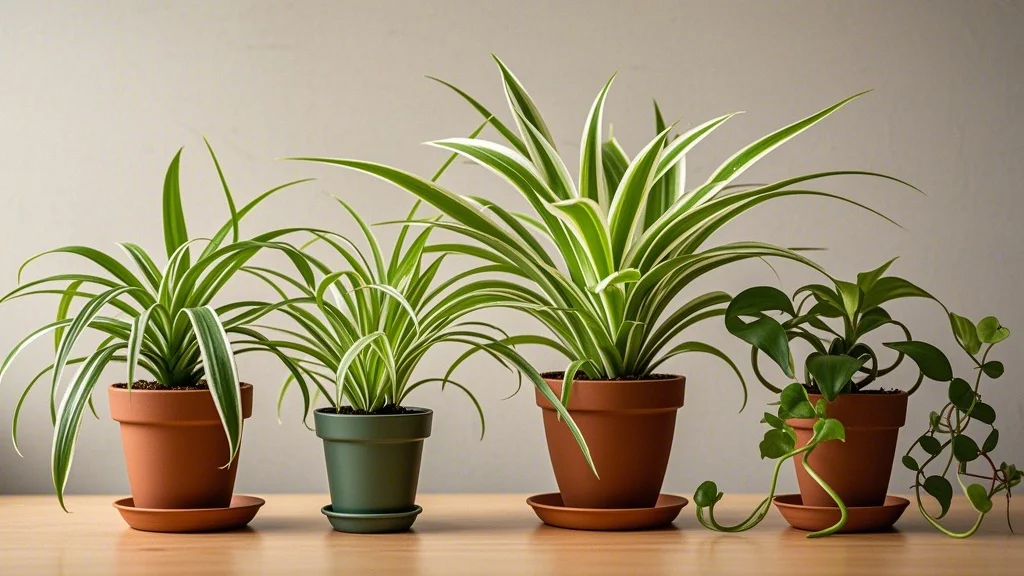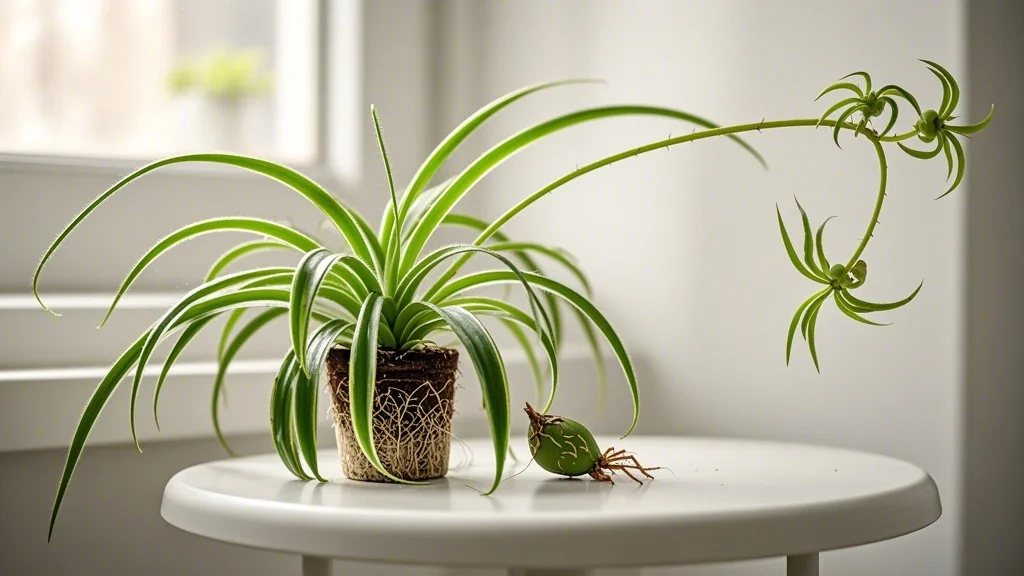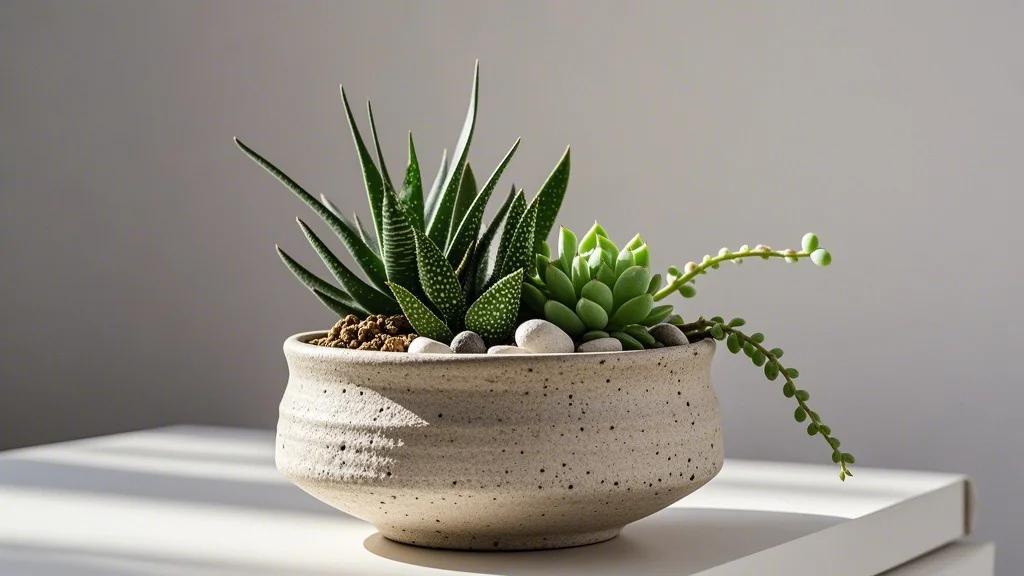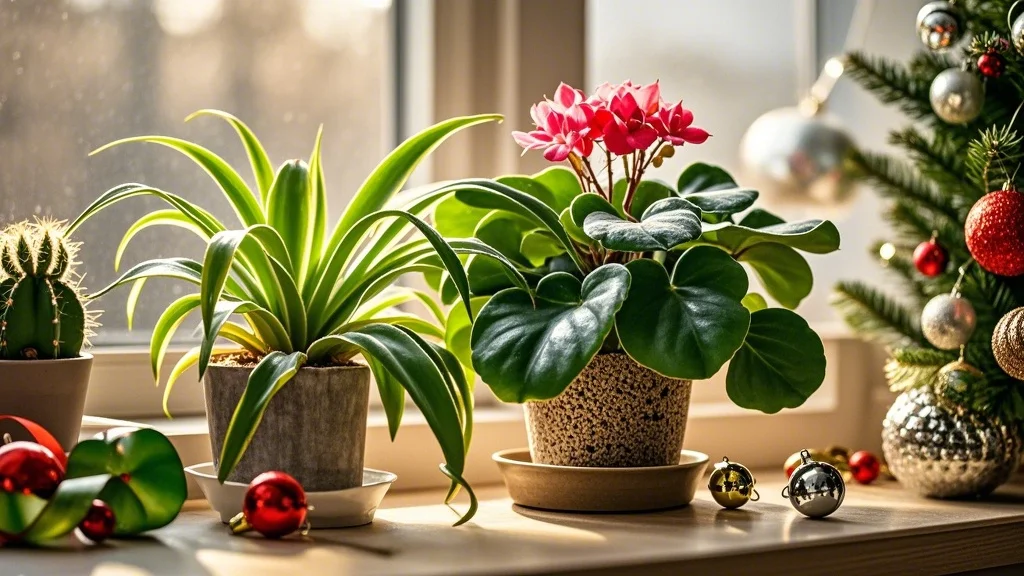The Spider Plant (Chlorophytum comosum) has earned its place as one of the most beloved houseplants worldwide. With its graceful arching leaves, air-purifying abilities, and remarkable resilience, it’s the perfect choice for both novice and experienced plant parents. What makes this classic even more appealing to many urban dwellers is its pet-safe status—a crucial consideration for those sharing their homes with furry companions.
Whether you’re just beginning your indoor gardening journey or looking to expand your collection with a reliable, non-toxic option, the Spider Plant offers beauty, functionality, and peace of mind. This comprehensive guide will walk you through everything you need to know about cultivating thriving Spider Plants in your urban space while keeping your pets safe.
Contents
- 1 Why Spider Plants Are Perfect for Pet Owners
- 2 Spider Plant Varieties
- 3 Light Requirements
- 4 Watering Needs
- 5 Humidity and Temperature
- 6 Soil and Potting
- 7 Fertilizing Your Spider Plant
- 8 Propagation: Growing Baby Spider Plants
- 9 Common Problems and Solutions
- 10 Seasonal Care Tips
- 11 Creative Display Ideas for Urban Spaces
- 12 Benefits Beyond Pet Safety
- 13 Conclusion
Why Spider Plants Are Perfect for Pet Owners
For pet owners, finding houseplants that won’t harm curious cats or dogs can be challenging. The good news is that Spider Plants are officially recognized as non-toxic by the ASPCA (American Society for the Prevention of Cruelty to Animals). This means that even if your pet takes an exploratory nibble, they won’t suffer serious health consequences.
While Spider Plants won’t poison your pets, it’s worth noting that they contain compounds similar to mild hallucinogens for cats. This explains why felines are often particularly attracted to them! Though not harmful, excessive consumption might cause minor stomach upset. For this reason, placing your Spider Plant in a hanging basket or on a high shelf can be a wise choice—protecting both your plant and your pet’s digestive system.
Spider Plant Varieties

The classic Spider Plant comes in several attractive varieties, each with its own unique charm:
- Variegated Spider Plant (Chlorophytum comosum ‘Vittatum’) – The most common variety, featuring green leaves with a central white stripe.
- Reverse Variegated Spider Plant (Chlorophytum comosum ‘Reverse Variegatum’) – Displays white outer edges with a green center stripe.
- Solid Green Spider Plant (Chlorophytum comosum ‘Green’) – All-green leaves without variegation, typically growing more vigorously than variegated types.
- Curly Spider Plant (Chlorophytum comosum ‘Bonnie’) – A compact variety with curly, twisted leaves that give it a unique appearance.
- Zebra Spider Plant (Chlorophytum laxum ‘Zebra’) – Features distinctive horizontal striping patterns.
All varieties share the same care requirements and pet-safe qualities, so your choice can be based purely on aesthetic preference.
Light Requirements
Spider Plants are remarkably adaptable when it comes to light conditions, though they do have preferences for optimal growth:
- Ideal light: Bright, indirect light
- Can tolerate: Low to medium light conditions
- Avoid: Direct sunlight, which can scorch the leaves
In an urban apartment, a north or east-facing window provides perfect lighting conditions. If you only have access to brighter south or west-facing windows, place your Spider Plant a few feet away from the window or filter the light with a sheer curtain.
The variegation in Spider Plants is directly affected by light levels—plants receiving insufficient light may lose their distinctive white stripes, while those in brighter conditions will display more pronounced variegation. If you notice your plant’s leaves becoming more uniformly green, it’s likely signaling a need for more light.
Watering Needs
Spider Plants prefer a consistent watering schedule with periods of dryness between waterings:
- Allow the top 1-2 inches of soil to dry out completely before watering again
- Water thoroughly until excess drains from the bottom of the pot
- Reduce watering frequency during winter months when growth slows
One of the most common mistakes with Spider Plants is overwatering, which can lead to root rot. These plants are more tolerant of underwatering than overwatering, so when in doubt, it’s better to wait an extra day.
Signs of improper watering include:
- Overwatering: Yellowing leaves, soggy soil, mushy stems
- Underwatering: Brown leaf tips, curling leaves, slow growth
Spider Plants are sensitive to fluoride and chlorine in tap water, which can cause brown leaf tips. If possible, use filtered water, rainwater, or allow tap water to sit out overnight before using it on your plant.
Humidity and Temperature
As native to tropical and subtropical regions of Africa, Spider Plants appreciate moderate humidity but are forgiving of typical indoor conditions:
- Ideal humidity: 40-60%
- Temperature range: 65-75°F (18-24°C)
- Minimum temperature: 45°F (7°C)
Most urban homes naturally fall within these parameters, making Spider Plants exceptionally well-suited to apartment living. However, during winter when indoor heating can create dry conditions, your plant may benefit from occasional misting or placement near a humidifier.
Spider Plants can also thrive in bathrooms where shower steam provides extra humidity, provided there’s adequate light.
Soil and Potting
The right soil mix is crucial for Spider Plant health:
- Ideal mix: Well-draining potting soil with added perlite or coarse sand
- pH preference: Slightly acidic to neutral (6.0-7.0)
- Pot type: Terracotta or ceramic pots with drainage holes
Spider Plants develop tuberous roots that store water, which can eventually cause them to become root-bound. While they actually prefer being slightly root-bound (and will produce more plantlets in this state), repotting becomes necessary when:
- Roots are visibly circling or emerging from drainage holes
- The plant dries out extremely quickly after watering
- Growth has slowed significantly despite proper care
When repotting, choose a container only 1-2 inches larger in diameter than the current pot. Excessive pot size can lead to overwatering issues as the soil stays wet too long.
Fertilizing Your Spider Plant
Spider Plants aren’t heavy feeders, but they do benefit from occasional fertilization:
- Frequency: Once a month during spring and summer (growing season)
- Type: Balanced liquid houseplant fertilizer (10-10-10 or similar)
- Application: Dilute to half the recommended strength
- Winter care: No fertilizer needed during fall and winter
Over-fertilization can cause more harm than good, resulting in brown leaf tips and salt buildup in the soil. If you notice white crust forming on the soil surface, flush the pot thoroughly with water to remove excess fertilizer salts.
Propagation: Growing Baby Spider Plants

One of the most rewarding aspects of Spider Plant ownership is their prolific production of “spiderettes” or plantlets—the small plants that form at the end of long stems. These make propagation incredibly simple:
Method 1: Rooting in Water
- Snip the plantlet from the mother plant, keeping a small portion of the stem attached
- Place the base of the plantlet in a container of water
- Wait 1-2 weeks for roots to develop (change water weekly)
- Once roots reach 1-2 inches, plant in soil
Method 2: Direct Soil Planting
- Leave the plantlet attached to the mother plant
- Place a small pot with moist soil beneath the plantlet
- Pin the plantlet to the soil surface (paperclips work well)
- Once rooted (2-3 weeks), cut the connecting stem
Method 3: Air Layering
- Wrap damp sphagnum moss around the base of the plantlet while still attached
- Cover with plastic wrap to maintain moisture
- Once roots form through the moss, cut and pot the new plant
Propagated Spider Plants make wonderful gifts for friends, especially those with pets who need safe houseplant options.
Common Problems and Solutions
Despite their resilience, Spider Plants can encounter a few issues:
Brown Leaf Tips
- Causes: Fluoride/chlorine in water, low humidity, fertilizer buildup, dry soil
- Solution: Use filtered water, increase humidity, flush soil occasionally
Pale or Fading Leaves
- Causes: Too much direct sunlight or insufficient light
- Solution: Adjust placement to provide bright indirect light
No Plantlets Forming
- Causes: Young plant (under 1 year), insufficient light, or excessive pot size
- Solution: Be patient, increase light exposure, allow plant to become slightly root-bound
Pest Issues
Spider Plants are relatively pest-resistant but can occasionally attract:
- Spider mites: Tiny pests that cause stippling on leaves. Treat with insecticidal soap or neem oil.
- Aphids: Small insects that cluster on new growth. Remove with a strong water spray or insecticidal soap.
- Mealybugs: White, cottony pests that gather in leaf axils. Remove with alcohol-dipped cotton swabs.
Seasonal Care Tips
Spring & Summer
- Increase watering as growth accelerates
- Begin monthly fertilization
- Watch for plantlet production
- Consider moving outdoors to a shaded patio (temperatures permitting)
Fall & Winter
- Reduce watering frequency
- Stop fertilizing
- Protect from cold drafts
- Provide supplemental light if days are very short
Creative Display Ideas for Urban Spaces
Spider Plants are versatile when it comes to display options:
- Hanging Baskets: The classic choice that showcases cascading plantlets while keeping them away from pets.
- Macramé Hangers: For a boho aesthetic that complements the plant’s relaxed growth habit.
- Floating Shelves: Place several varieties together for a striking display.
- Bookshelf Accent: Let plantlets cascade down the sides of bookshelves.
- Bathroom Greenery: Spider Plants thrive in humid bathroom environments.
- Kitchen Herb Companion: Pair with culinary herbs for a functional green corner.
- Vertical Garden Integration: Include in living wall systems for texture variation.
Benefits Beyond Pet Safety
Spider Plants offer numerous benefits that make them ideal for urban living:
Air Purification
NASA’s Clean Air Study identified Spider Plants as effective air purifiers that remove formaldehyde, xylene, and carbon monoxide from indoor environments.
Humidity Regulation
Through transpiration, Spider Plants release moisture into the air, helping to maintain healthy humidity levels.
Stress Reduction
Studies suggest that interacting with houseplants can reduce psychological and physiological stress—making Spider Plants perfect companions for busy city dwellers.
Educational Value
For households with children, Spider Plants provide an accessible introduction to plant care and propagation concepts.
Conclusion
The Spider Plant truly earns its reputation as the perfect houseplant for urban gardeners with pets. Its combination of attractive appearance, air-purifying abilities, and non-toxic nature makes it an unbeatable choice for creating a greener, healthier living space without compromising pet safety.
Whether you’re a first-time plant parent or an experienced indoor gardener, the Spider Plant rewards minimal effort with maximum beauty. Its forgiving nature accommodates the occasional missed watering, while its prolific production of plantlets ensures you’ll never run out of green companions to share with friends and family.
By following the care guidelines in this guide, you’ll be well on your way to growing a thriving Spider Plant that can become a long-lived fixture in your home—potentially for decades to come. As your plant matures and produces generations of offspring, you’ll understand why this classic houseplant has remained a favorite among urban gardeners for over a century. Ready to add more pet-safe plants to your collection? Explore our other guides on non-toxic houseplants perfect for homes with furry friends.









